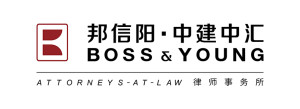It is widely known, unless exempted by laws and regulations, that when a domestic incorporated company embarks on an initial public offering of shares for a listing, its state-owned shareholders are required to transfer part of their stake – at 10% of the actual number of shares issued – to the National Council for Social Security Fund. However, the relevant regulators have not been clear about whether a partnership with a state-owned asset makes it a state-owned shareholder and if it needs to fulfil the obligation to transfer. The identification of partnerships with state-owned assets as state-owned shareholders of listed companies was finally settled on 16 May 2018, when the State-owned Assets Supervision and Administration Commission of the State Council (SASAC), the Ministry of Finance, and the China Securities Regulatory Commission jointly issued the Measures for the Supervision and Administration of State-Owned Shares of Listed Companies (Decree No. 36).

Partner
Boss & Young
Before the promulgation of Decree No 36, neither the Interim Regulations on Administration of State Shareholder’s Logo of Listed Company (Document No. 80) nor the Measures for the Supervision and Administration of Transactions of State-owned Assets of Enterprises (Decree No. 32) clarified the identity of state-funded limited partnerships as state-owned shareholders. Therefore, the local regulators have quite different opinions on whether a state-funded limited partnership should, in practice, be identified as a state-owned shareholder.
Among the cases, New Alliance Capital was the first state-funded limited partnership identified as a state-owned shareholder. According to the listing prospectus of Tong Oil Tools, New Alliance Capital holds 15.41% of the shares of Tong Oil Tools before the IPO. Limited partner Shanghai Alliance Investment and the Chinese Academy of Sciences Holdings hold 48.29% and 19.32% shares of New Alliance Capital, respectively. The total capital contribution from the pure state-owned partners of New Alliance Capital exceeds 50%, and the largest contributor is a purely state-owned partner. Therefore, the Shanghai SASAC identified New Alliance Capital as a state-owned shareholder.
In another case, since limited partners Xiamen Xiangyu Group Corporation and Xiamen C&D Corporation of Fujian Xingzheng Strategic Venture Capital Investment Firm are state-owned enterprises, the SASAC of Xiamen Government also identified Xingzheng Strategic as a state-owned shareholder. Of course, there are also cases where the state-funded limited partnerships in the shareholders of listed companies are not identified as state-owned shareholders, such as Beijing Junlian Ruizhi Venture Investment Center and Hunan New Energy Venture Capital Fund.
In practice, the state-funded limited partnerships are mostly private equity funds, based on the arrangements. As the standard for identifying the state-owned nature of state-funded limited partnerships is not uniform, it is likely for SOEs to lower their intention to participate in the investment in a private equity fund after considering various problems, such as withdrawal from the fund investment, approval of the management plan of state-owned shares and free transfer of state-owned shares. Besides, some investees are not willing to accept the equity investment from state-funded limited partnerships due to concerns about the process cycle. As a result, the state-funded limited partnerships may lose the opportunity to invest in high-quality projects.

Paralegal
Boss & Young
After the promulgation of Decree No. 36, according to its Article 78, “The state-funded limited partnerships shall not be identified as state-owned shareholders, and the supervision and management of the shares held by them of the listed company shall be separately stipulated”, the identification of state-funded limited partnerships as state-owned shareholders has a clear basis for the first time. This settled the argument about the judgment criteria in the industry, i.e., the ratio of the state-owned sector in the shares of a partnership, the state-owned sector in the general partners, or the criteria combining the above two. According to the regulation, state-funded limited partnerships no longer need to fulfil the obligation of transferring state-owned shares. The move greatly motivates state-backed enterprises to participate in private equity funds.
Decree No.36 came into effect on 1 July 2018. Although it is not a special management method for identifying state-owned shareholders, the provisions of Article 78 indicate the current preference opinion of the state-owned assets regulatory agencies, financial departments and securities regulatory authorities on the identification of the nature of state-funded limited partnerships. It helps simplify the investment procedures of state-owned equity investment funds to some extent, enhances the flexibility of equity investment and withdrawal, and opens up a new path for the state-owned equity investment funds to invest in companies to be listed and participate in the capital operation of listed companies extensively and deeply.
However, it is noteworthy that the clear identification of state-funded limited partnerships not as state-owned shareholders does not naturally apply to the regulation of changes in shares held by state-funded limited partnerships before the listing of the company. Private equity funds often have transaction arrangements like buying shares by valuation, valuation adjustment on performance, repurchase and withdrawal of original shareholders or actual controllers. These arrangements often conflict with the existing requirements of state-owned assets supervision and management. For example, taking the transfer of equities of limited liability companies held by the state-funded limited partnerships, as we know, the local state-owned assets supervision and management departments and property rights trading institutions have different understandings on whether the repurchase and withdrawal arrangement needs asset evaluation and listing transaction. It can be seen that, presently, the top priority is to develop a set of regulatory rules with a definite scope of application and strong practicality and conforming with the concept of promoting the development of state-owned equity investment funds.
Lu Xili is a partner and Fan Minzhi is a paralegal at Boss & Young
中国上海市黄浦区中山南路100号
金外滩国际广场12-15楼 邮编:200010
12/F-15/F, 100 Bund Square
100 South Zhongshan Road
Huangpu District, Shanghai 200010, China
电话 Tel: +86 21 2316 9090
传真 Fax: +86 21 2316 9000
电子邮箱 E-mail:
luxili@boss-young.com
fanminzhi@boss-young.com






















